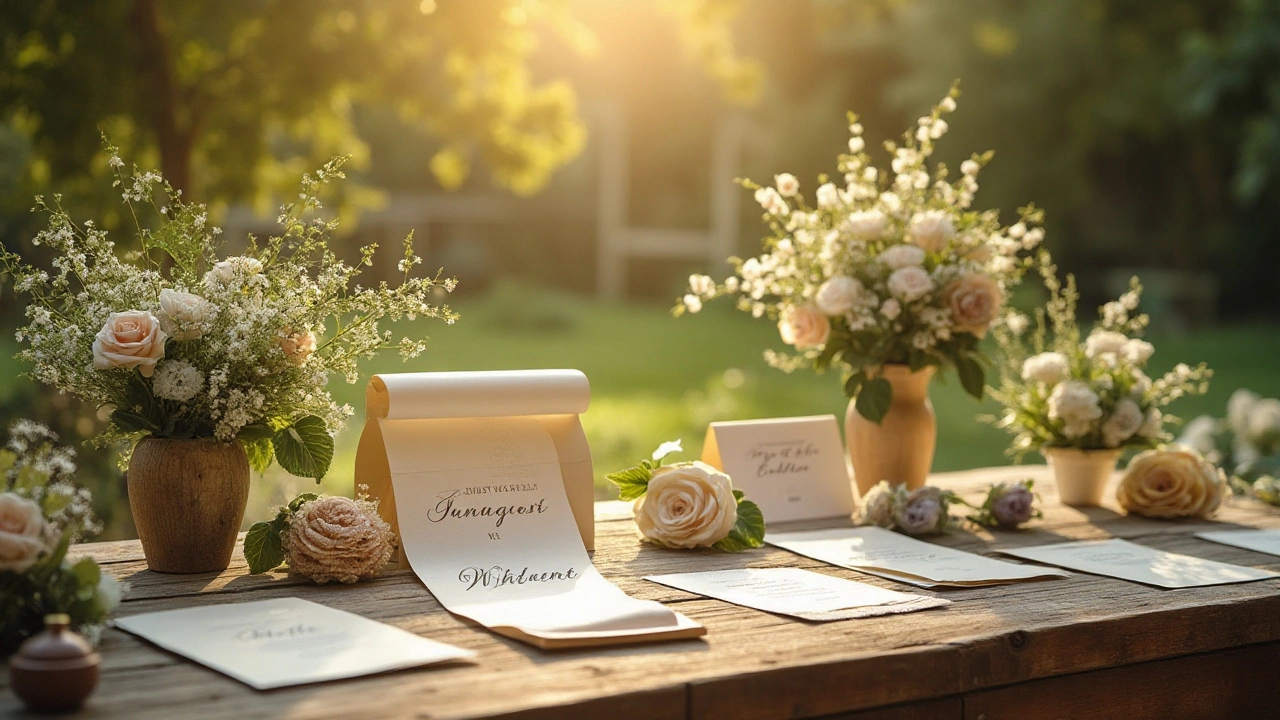Planning a wedding involves a series of decisions, often accompanied by the tricky question of who should pay for what. Wedding invitations, an essential part of the celebration, are no exception to this rule. While some stick to tradition, others embrace more modern approaches. Understanding the dynamics of who usually picks up the tab for these crucial pieces of stationery can save you a lot of guesswork and stress.
In the past, it was customary for the bride’s family to cover the costs of wedding invitations. However, as roles and traditions evolve, many couples are taking on the expense themselves or finding creative ways to evenly distribute costs. It’s essential to communicate openly with all parties involved to ensure that the details are managed seamlessly.
- Traditional Payment Practices
- Modern Trends and Shared Expenses
- Cultural Variations in Covering Costs
- Budget-Friendly Tips for Invitations
Traditional Payment Practices
In the grand tapestry of wedding customs, the allocation of costs has deep-rooted traditions, particularly when it comes to wedding invitations. Historically speaking, it has been a longstanding belief that the bride’s family should shoulder the expense of these invitations. This expectation stems from the era when weddings were seen significantly as societal events orchestrated primarily by the bride's family.
Dive into the pages of history, and you'll find that this practice was tied to the ancient notion of presenting the bride's family as gracious hosts. Here, the idea was about extending hospitality, which naturally included handling costs like the stationery that heralded the event. This custom wasn’t just about monetary contributions; it was a genuine reflection of the family's commitment and ability to host such a monumental occasion. A touch of elegance was an expected standard, thus inspiring families to invest in superior quality designs.
With such alacrity, invitations were crafted with luxurious paper and often showcased intricate calligraphy, symbolizing not just the impending union but the stature and taste of the families involved. This was especially critical in societies where marriages were seen as alliances between families beyond the personal relationship. The bride’s family paid attention to details on invitations to ensure that their family's status reflected stately in these gestures.
Though such customs have waned with time, vestiges of these practices endure today, even in diverse cultural landscapes. For instance, many European families adhere to these traditions, keeping the spirit of familial responsibility alive. Within such frameworks, it's common for negotiations to arise, leading to the mingling of time-honored customs with present-day values.
There was an unquestioned acceptance of these norms back in the day, as this division of expenses blended seamlessly with the dowry systems prevalent in a multitude of cultures. These customs were woven into the fabric of family obligations, influencing everything from the scale of the invitation list to the design and printing of the cards. Those who championed tradition believed such gestures not only earned them respect but symbolized the potential joining of fortunes.
"Weddings are deeply rooted in tradition, and for many families, maintaining these customs around invitation costs bonds them closer to their heritage," notes cultural historian Eliza Carter.
No matter how times have changed, or how modernized wedding practices have become, these traditional elements serve as a reminder of how relationships—and indeed celebrations—were cultivated through the generations. By understanding these roots, current couples gain insight into which customs to honor or reshape according to their personal aspirations for their big day.
Modern Trends and Shared Expenses
In the evolving landscape of wedding planning, wedding expenses have seen a significant shift from traditional familial responsibilities to more contemporary approaches. This change reflects wider societal trends towards equality and shared responsibilities in relationships and family dynamics. Many couples today advocate for a more equitable distribution of wedding-related costs, including wedding invitations. This shift grants couples greater control over financial aspects and allows them to make decisions that align with their personal values and shared vision for their special day.
One of the most prevalent trends in recent years is the increase in couples hosting and financing their weddings entirely. As many partners marry later in life, they tend to have more stable financial situations, thereby enabling them to afford their own wedding expenses, including invitations. This independence frequently translates into personalized decisions regarding design, materials, and delivery methods, reflecting the couple's shared aesthetic and creativity. The choices now range from traditional paper invites to digital alternatives, which can offer cost savings and environmental benefits.
The modern approach also highlights a tendency towards hosting 'green' weddings, where reducing one's carbon footprint is part of the celebration. Digital invitations or plantable paper options have gained popularity, emphasizing a conscious choice to blend tradition with sustainability. Couples who opt for these alternatives usually share the cost, considering it part of their joint endeavor to live more sustainably. According to a survey by WeddingWire, nearly one-third of couples are opting for digital invitations, demonstrating this growing preference.
Another driving factor for shared expenses comes from the blending of cultures in multicultural weddings. Where families contribute based on cultural expectations, couples often prioritize fairness and balance, resulting in many couples choosing to divide costs equitably regardless of traditional norms. This signifies a respect for diverse backgrounds within the couple's framework, resulting in harmonious budgeting strategies that best suit their personal circumstances.
"Today's weddings reflect the philosophy and economics of a new generation. They celebrate not only the union of the couple but also the fusion of similar values towards shared decision-making." - Wedding Trends Expert, Emma Doyle
In a practical sense, couples can pool their resources in several effective ways. Establishing a joint savings account for wedding expenses is a popular method, giving both parties equal control over how funds are allocated. Others might engage in crowd-funding efforts like honeymoon registries, where guests contribute financially directly as part of their wedding gift. This modern approach often involves transparent communication, where discussing financial contributions becomes part of the planning process, ideally leading to more open and understanding relationships even before the vows are exchanged.
Notwithstanding these more contemporary trends, it's crucial for partners to candidly discuss and agree upon financial commitments to prevent misunderstandings. By collaboratively setting clear expectations and responsibilities, couples are better positioned to enjoy a wedding that truly mirrors their shared essence and aspirations. Thus, in today's world, the practice of sharing the obligation of paying for wedding invitations not only symbolizes an equal partnership but can also lead to strengthened bonds, understanding, and financial awareness long after the wedding day has concluded.

Cultural Variations in Covering Costs
Weddings are a universal celebration, yet the customs surrounding them can vary greatly across different cultures, including who traditionally pays for the elements like wedding invitations. In many Western cultures, there has been a longstanding expectation that the bride's family handles the financial responsibilities of the wedding, including the cost of invitations. This tradition has its roots in historical gender roles and the symbolism of the bride 'leaving' her family home.
Interestingly, in some Asian cultures, the expenses are more heavily shared or even primarily shouldered by the groom's family. For instance, in many Indian weddings, it is common for the groom's side to cover significant portions of the wedding expenses, considering the event as more than just a union of two people but an alliance of two families. Invitations, as a result, may often fall into the groom's budget.
Cultural variations extend further across different continents. In parts of Africa, community and family collectives might share the cost of the wedding to ease the financial burden on one particular side. This communal approach often means that invitations are collaboratively funded, embracing a spirit of collective support that reflects the traditional values of community interconnectedness.
"In Nigerian traditional weddings, the expenses, including invitations, are often collectively covered by extended family members, highlighting the deep-rooted cultural practice of communal support," says cultural anthropologist Dr. Adeola Johnson.
Even within specific cultures, economic factors and personal preferences play key roles in how expenses are handled today. For instance, many modern Chinese couples, especially those in urban areas, are increasingly opting to pay for their own wedding invitations, symbolizing their independence and modern outlook. Often parents may still contribute significantly, not out of obligation, but out of a willingness to support the couple in their journey.
Ultimately, these cultural variations highlight that there is no one-size-fits-all approach when it comes to paying for invitation costs. Different cultures bring different expectations, and within those, personal preferences and modern trends continue to shape the landscape. Engaging openly with family members about expectations and traditions can help ensure both respect for cultural practices and alignment with contemporary lifestyles, allowing for a beautiful blend of tradition and modernity in the wedding planning process.
Budget-Friendly Tips for Invitations
Spending wisely on wedding invitations doesn’t mean compromising on style or quality. Whether you're on a tight budget or simply looking to allocate funds elsewhere in your wedding budget, there are plenty of ways to make your invitations beautiful without breaking the bank. A great first step is opting for digital invitations. Sending your invites via email can be both cost-effective and environmentally friendly, effectively eliminating printing and postage costs. Plus, digital invitations often come with added functionalities, such as RSVP tracking, which could simplify your planning process significantly.
For those who prefer traditional snail-mail invitations, consider choosing simpler designs. Invitations with intricate designs, thick card stock, or multiple inserts tend to drive up costs. Instead, pick a minimalist or elegant template that captures your wedding's essence without extra frills. When printing, consider using standard-sized envelopes and cards as non-standard sizes can result in higher printing and postage fees. Additionally, balancing your budget may be as simple as reducing the guest list. Less is more when you're prioritizing intimacy or when cost is a primary concern.
A creative cost-saving option could be DIY wedding invitations. Armed with some basic craft supplies and a little bit of inspiration, you could craft something uniquely yours and save a bundle in the process. Numerous tutorials are available online, and many couples find this process a rewarding part of wedding planning. It’s important, however, to remember to factor in the time and effort it takes to create DIY invites.
Printing services are worth considering, too. Many online printing shops offer reasonable rates, with the bonus of countless design templates at your disposal. It’s a good idea to shop around and compare prices between different providers. In some cases, buying your card stock in bulk from retailers like Costco or Staples and then having a local print shop do the printing can get you professional results at a fraction of the price. Always keep an eye out for discounts and deals; off-season or holiday promotions can shave off significant amounts from your final bill.
“The best invitations are those that reflect the love story of the couple, not the price tag,” says Emily Post, a renowned etiquette expert in wedding invitations.
Don’t forget to consider using postcards as an alternative to standard invitations. Postcards can significantly reduce postage costs and often require less material, thus lowering your costs. Decorative touches can be added to the invites for those seeking a luxe look. Consider enhancing them with a beautiful ribbon or a custom wax seal. While these added elements do come at a cost, they can be a less expensive way to add a touch of sophistication.
Lastly, while the latest trends are enticing, vintage could win the day, being both elegant and less expensive. Take a good look at invitation design trends from yesteryear and put a new twist on them. Combining past elegance with present-day simplicity might be just what you need to create standout invitations. And remember, the ultimate goal is to welcome your guests to your special day in a style that stays true to you, without exceeding your wedding expenses.

